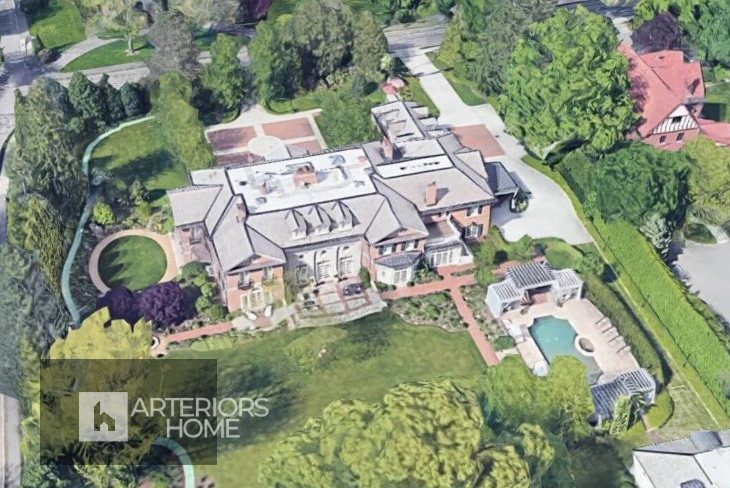When people mention the Jim Davis House, they might be talking about two completely different things. One is the real home of the famous cartoonist who created Garfield. The other is a hilarious comedy sketch that went viral online.
Jim Davis, the mastermind behind the lasagna-loving orange cat, lived on a sprawling property in Albany, Indiana. His real-life home and studio became almost as famous as his cartoon creations among dedicated fans who followed his work and career.
But in a strange twist that only the internet could create, the term “Jim Davis House” took on a whole new meaning after a comedy sketch on Netflix made it the center of an absurd joke. This unexpected connection has created a fascinating story worth exploring.
Who is Jim Davis, and Why is His House Famous?
Jim Davis was born on July 28, 1945, in Marion, Indiana, and grew up on a small farm with his parents and younger brother. His early life on the farm would later inspire some of the country settings and animal characters that appeared in his comics.
Before creating Garfield, Davis worked as an assistant on another comic strip called “Tumbleweeds.” This experience gave him the skills and industry connections he needed to launch his successful comic in 1978, which would become one of the world’s most popular strips.
The success of Garfield allowed Davis to establish a permanent home and headquarters in Albany, Indiana. This property became both his residence and the creative hub for his worldwide cartoon empire for many decades.
His countryside property reflected his rural roots while housing a sophisticated operation that produced comics, television shows, movies, and merchandise featuring his famous cat. The Jim Davis’s House became a landmark for cartoon fans and locals alike.
The Historic Albany Property: Inside Garfield’s Birthplace
The Jim Davis House sat on an impressive 21-acre farm in Delaware County, Albany, Indiana. The spacious property provided plenty of room for both living quarters and business operations, keeping Davis close to where the magic happened.
Just south of the main house stood the world headquarters for Paws Inc., the company Davis founded in 1981 to manage all things Garfield. This building served as the creative workshop where Garfield strips and products were developed for global distribution.
At its peak, the headquarters employed around 60 people who worked on everything from comic strips to merchandise licensing. The Jim Davis House complex became a self-contained creative ecosystem that generated one of the most successful cartoon franchises in history.
The property included multiple buildings designed to handle different aspects of the Garfield empire. Staff worked on artwork, business deals, and merchandise designs all within walking distance of where Davis lived.
Davis often mentioned how important it was to keep his work and home life connected. The Jim Davis’s House arrangement allowed him to maintain a peaceful country lifestyle while running an international business from his backyard.
Timeline: What Happened to the Jim Davis House?
In 2019, a major change came to the historic property when Paws Inc. announced it would close its physical headquarters. Employees began transitioning to a work-from-home model as the company adapted to new technology and changing business needs.
The decision was primarily financial, as the company had reduced its workforce to about 30 employees. Technological advances had changed how they operated their worldwide business, making a large campus less necessary than in previous decades.
Another factor was the extensive archive of existing Garfield artwork. After decades of production, they had accumulated enough material that creating new art wasn’t as urgent, further reducing the need for a centralized studio space.
That same year, Jim Davis donated the property to the Ball State University Foundation. This generous gift meant that proceeds from any future sale would benefit his alma mater rather than going into his pocket.
Also in 2019, Viacom (now Paramount Global) acquired Paws Inc., and the official headquarters moved to Manhattan, New York. This corporate change marked the end of an era for the Albany location’s role in Garfield’s creation.
By June 2024, the property was listed for sale with a starting bid of $300,000. The listing highlighted its multiple buildings and over 19 acres of land, suggesting potential future uses as an event facility, office space, nonprofit headquarters, or even a museum.
As of 2025, verified updates about the property’s status remain limited. The most recent public appearance by Jim Davis related to his work was in November 2024, when he visited Ball State University for a movie screening and Q&A session.
The Comedy Connection: “I Think You Should Leave” Makes Jim Davis’s House Famous Again
While the real Jim Davis’s House was changing, an entirely different “Jim Davis’s House” was capturing Internet attention. In 2019, Netflix released a sketch comedy show called “I Think You Should Leave with Tim Robinson.”
In the sixth episode of the first season, actress Kate Berlant played a character obsessed with having purchased Jim Davis’s house. The absurdist comedy sketch portrayed her as fixated on this single fact about herself to an uncomfortable degree.
The character repeatedly announces, “I’ll never forget the day that I told you that I bought Jim Davis’ house, the creator of Garfield.” This line, delivered with increasing desperation for recognition, became an instant classic among fans of the show.
The sketch takes an even more bizarre turn when the character claims Jim Davis returned to the house looking for a “Garfield treasure chest.” This fictional element has no basis in reality but perfectly captures the show’s surreal humor style.
What makes the sketch particularly effective is how it uses a real person (Jim Davis) and a plausible situation (buying someone’s former house) as a starting point before spiraling into complete absurdity. The contrast creates comedy gold that resonated with viewers.
Internet Fame: How Jim Davis’s House Became a Meme

After the sketch aired, “Jim Davis House” took on a life of its own online. Reddit communities, TikTok videos, and Twitter posts began referencing the joke, often without explanation, creating an in-group of people who understood the reference.
Fans of the show created memes, remixes, and parodies of the sketch. Some would simply quote the famous line about buying Jim Davis’s house in completely unrelated conversations, confusing those not familiar with the show.
The phrase “Jim Davis’s House” became shorthand for someone obsessively mentioning a single unimpressive fact about themselves. This meaning exists entirely separately from the actual property where the cartoonist lived and worked for decades.
By 2025, the reference will continue to appear in social media conversations. Though no new official content has expanded on the sketch, its cultural staying power demonstrates how comedy can permanently alter the meaning of seemingly straightforward terms.
What’s particularly interesting is how few people making these references know much about the real Jim Davis or his actual house. The comedy version has, for many internet users, completely overshadowed the reality.
Visiting Garfield’s Former Headquarters: What Fans Should Know
For dedicated Garfield fans wondering if they can visit Jim Davis’s House, the answer is complicated. The property was private, even during its active years as Paws Inc. headquarters, with limited public access.
Since the 2019 changes, the property has not operated as a tourist destination. Potential visitors should be aware that the buildings now serve different purposes than during the height of Garfield’s production.
Fans interested in Jim Davis and Garfield might instead consider visiting Ball State University in Muncie, Indiana. As Davis’s alma mater and the recipient of his property donation, the university occasionally hosts events celebrating his work.
The university’s connection to Davis extends beyond the property donation. Ball State has recognized his achievements with an honorary degree and maintains archives related to his work, making it a meaningful destination for serious fans.
Visitors to the Albany area can still drive past the former Paws Inc. location, though there is limited official signage or recognition of its historical significance to cartoon history. The rural setting remains much as it appeared during Davis’s ownership.
Legacy: The Lasting Impact of Jim Davis and His Creative Home
Jim Davis’s House represents an important chapter in cartoon history. For decades, this unassuming Indiana property served as the birthplace for content that reached hundreds of millions of readers worldwide.
From this location, Davis built Garfield into a merchandising empire worth billions of dollars. The character appeared on products ranging from coffee mugs to clothing, all conceived and approved within the walls of the Albany headquarters.
The property’s transformation mirrors broader changes in the creative industries. As digital tools made remote work more feasible, even established operations like Paws Inc. adapted by moving away from centralized production facilities.
Davis’s decision to donate the property demonstrated his ongoing connection to his Indiana roots and education. Rather than selling for personal profit, he ensured the property would benefit future generations of students at his alma mater.
Meanwhile, the comedy sketch has established a completely different kind of legacy. It demonstrates how pop culture can appropriate and transform real people and places into something entirely new through the power of humor and shared references.
Conclusion
The story perfectly captures how reality and pop culture can intertwine in unexpected ways. What began as simply the home and workplace of a successful cartoonist has evolved into both a piece of cartoon history and an internet joke.
For Garfield fans, the Albany property represents the creative source of a beloved character. This special location served as the foundation for a global phenomenon that continues to entertain new generations of readers.
For comedy fans, the phrase triggers memories of a specific sketch and the shared experience of understanding an obscure reference. This cultural meaning exists completely separately from the physical buildings in Indiana.
As we move forward, both versions will likely continue their separate but parallel existences. The physical property may find a new purpose while the comedy reference lives on in the ever-evolving landscape of internet culture.
Whichever meaning brought you to this story, this location remains a fascinating example of how places can take on significance far beyond their physical structures. Sometimes, a house becomes much more than just a place to live.




No Comment! Be the first one.